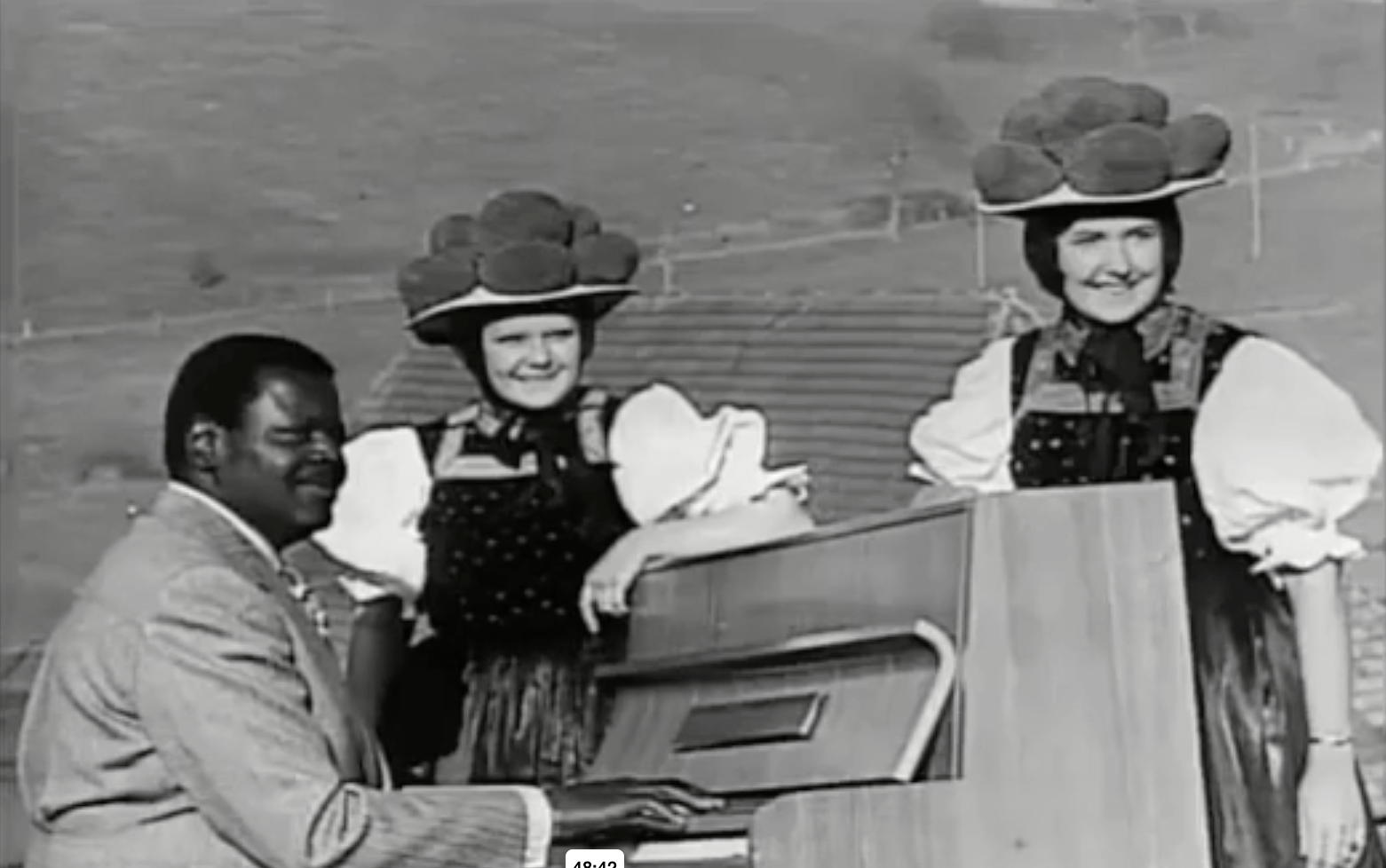The Vision
With one Olympic staged show under their belt, the team decided that this could be the best platform to elevate artists who used their craft for the betterment of humanity
.
Would the Olympic Committee consider bringing artists back into the fold? The idea blossomed when the team learned that 1948 was the final year the IOC awarded medals to both athletes and artists at the Olympic Games.
Dreaming of an Olympic platform for cross-culture understanding
The Olympics is a platform for cross- cultural understanding. The potent combination of patriotism and excellence, in the hands of artists, could also move the needle on global acceptance of other cultures.
This was what Oscar Peterson and so many others artists had done on their own for decades.


With one Olympic staged show under their belt, the team decided that this could be the best platform to elevate artists who used their craft for the betterment of humanity.
Would the Olympic Committee consider bringing artists back into the fold? The idea blossomed when the team learned that 1948 was the final year the IOC awarded medals to both athletes and artists at the Olympic Games.
The Olympics is a platform for cross- cultural understanding.
The potent combination of patriotism and excellence, in the hands of artists, could also move the needle on global acceptance of other cultures. This was what Oscar Peterson and so many others artists had done in their own for decades.

Silver medal awarded to Canadian violinist, John Weinzweig in 1948
The Journey Begins
Research and Development
International Performing arts for all
The Team established a company named International Performing Arts For All IPAFA)
“For all” is a sports designation. IPAFA applied this to the arts.
Testing the Model
A blueprint was needed to show how we could bring cultures together. Firsthand encounters, between cultures, remove barriers and misconceptions.
The Blueprints Festival was the team’s first attempt to achieve that.
Staging festivals helped to prepare the team to take this concept to a world stage.
overcoming obstacles
The first Blueprints festival saw the worst rainstorms in decades, in the City of Toronto. Undaunted by the near financial ruin, the team staged a second Festival at the Harbourfront Centre the next year and accomplished their objectives.
Could this be A New Era of Arts and Culture?
In 2001, the Team was ready to present their concept to the International Olympic Committee.
A Pound of Olympic Advice
The Helping Hands of Canadian Olympic Executives
Guiding missles
The first Olympic direction came from the Canadian Olympic Association’s Head, Carol Ann Letheran, who advised that the group study the structure of the IOC, and its Int’l Federations.
The team was joined by James Murray, former Director of Games for the Canadian Olympic Committee. He unlocked years of his Olympic experience and poured it into the project.
POUNDING AHEAD
To receive advice from the most iinfluential Canadian IOC member, Richard W. Pound was invaluable.
Pound is credited with launching the most successful sales and marketing initiative for the IOC in its history.
He started a program for the IOC in the 80’s that brought it bank from the brink of bankruptcy to become the most prolific sports revenue-generating machines in the world.
R
Pound’s Advice
Bring the concept to the IOC and work with them on realizing its potential. OR
License the Rings for that specific purpose. OR
Strike out on their own and build the Games brick by brick, just like Pierre de Coubertin had done.
The OPTIONS
Option 3. appeared highly unlikely.
Option 2. seemed financially unattainable.
Option 1. won the day.
This option would set the wheels in motion for the next 12 years of IPAFA’s history.
For more details on Artists Olympians please read the Smithsonian article left link below. For more details on the ArtsGames History please follow the right link below.
